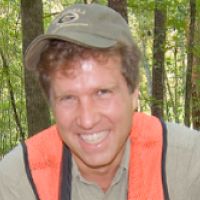Richter et al., 1999
Rapid accumulation and turnover of soil carbon in a re-establishing forest
Richter, Daniel D., Daniel Markewitz, Susan E. Trumbore, and Carol G. Wells (1999)
Nature 400: 56-58
-
Calhoun, INVESTIGATOR
-
Calhoun, INVESTIGATOR
Abstract
Present understanding of the global carbon cycle is limited by uncertainty over soil-carbon dynamics. The clearing of the world's forests, mainly for agricultural uses, releases large amounts of carbon to the atmosphere (up to 2 times 1015 g yr-1), much of which arises from the cultivation driving an accelerated decomposition of soil organic matter. Although the effects of cultivation on soil carbon are well studied, studies of soil-carbon recovery after cultivation are limited. Here we present a four-decade-long field study of carbon accumulation by pine ecosystems established on previously cultivated soils in South Carolina, USA. Newly accumulated carbon is tracked by its distinctive 14C signature, acquired around the onset of forest growth from thermonuclear bomb testing that nearly doubled atmospheric 14CO2 in the 1960s. Field data combined with model simulations indicate that the young aggrading forest rapidly incorporated bomb radiocarbon into the forest floor and the upper 60 cm of underlying mineral soil. By the 1990s, however, carbon accumulated only in forest biomass, forest floor, and the upper 7.5 cm of the mineral soil. Although the forest was a strong carbon sink, trees accounted for about 80%, the forest floor 20%, and mineral soil <1%, of the carbon accretion. Despite high carbon inputs to the mineral soil, carbon sequestration was limited by rapid decomposition, facilitated by the coarse soil texture and low-activity clay mineralogy.
Citation
Richter, Daniel D., Daniel Markewitz, Susan E. Trumbore, and Carol G. Wells (1999): Rapid accumulation and turnover of soil carbon in a re-establishing forest. Nature 400: 56-58. DOI: 10.1038/21867
Explore Further


